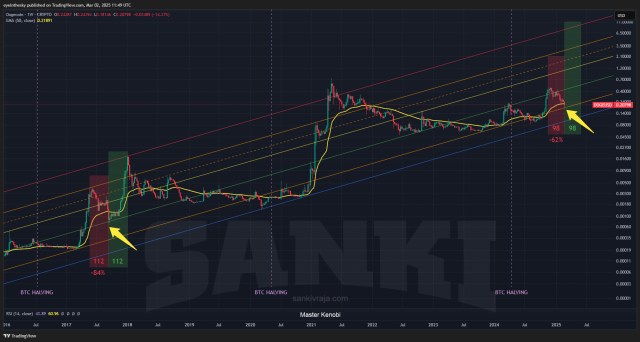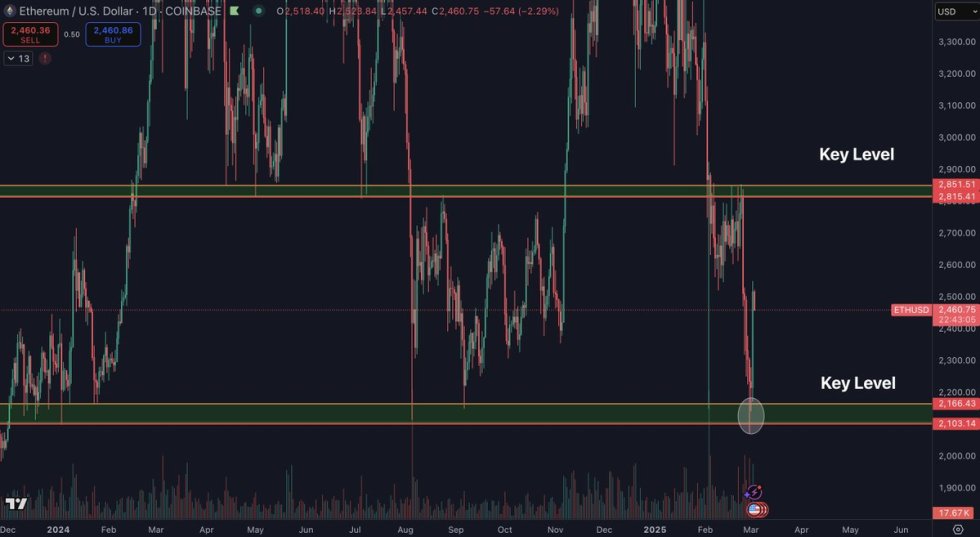The bankrupt crypto platform, Voyager Digital has responded to the joint acquisition proposal from FTX and Alameda, calling it a “low-ball bid dressed up as a white knight rescue.”
In a court filing, the lawyers of Voyager criticized the offer saying it only benefits FTX and disrupts the ongoing bankruptcy Bankruptcy Bankruptcy or insolvency constitutes a legal term and refers to being unable to repay debts. A business and a person can declare bankruptcy. When a person or company claims bankruptcy, it is described as a voluntary bankruptcy, and when your debtors force you into bankruptcy, it is referred to as involuntary. A voluntary bankruptcy occurs when the debtor or borrower, the party that owes the money files with the courts. Involuntary bankruptcy happens when your credits file a petition with the courts. Bankruptcy can only occur with a court filing. Since bankruptcy is a legal state, once the petition is filed with the appropriate court, local and state laws vary greatly. Different Kinds of Bankruptcy In the US, these legalities are referred to as Chapters 7 and 11, 12, and 13. Chapter 7 is a liquidation procedure, where all assets are sold, and the court oversees the distribution of the money to creditors based on their standing. Both businesses and individuals can file for chapter 7. Chapter 11 is a reorganization process where businesses are allowed to freeze their debts and continue to operate. In contrast, a method and procedure are negotiated through the courts to satisfy the obligations of the company. Chapter 13 is called a wage earner plan and helps people attempt to restructure their debts to repay their debts. This can include some debt forgiveness by creditors or reduced interest rates or balances. Not all private persons are eligible for Chapter 13, high amounts of debt don't qualify, and the person must file Chapter 11 or 7. Most individuals choose Chapter 13 over Chapter 11 or Chapter 7 because it aids them in avoiding foreclosure on their residence. The filing of bankruptcy is considered a last resort when businesses and persons have not been able to negotiate terms directly with their creditors. Bankruptcy or insolvency constitutes a legal term and refers to being unable to repay debts. A business and a person can declare bankruptcy. When a person or company claims bankruptcy, it is described as a voluntary bankruptcy, and when your debtors force you into bankruptcy, it is referred to as involuntary. A voluntary bankruptcy occurs when the debtor or borrower, the party that owes the money files with the courts. Involuntary bankruptcy happens when your credits file a petition with the courts. Bankruptcy can only occur with a court filing. Since bankruptcy is a legal state, once the petition is filed with the appropriate court, local and state laws vary greatly. Different Kinds of Bankruptcy In the US, these legalities are referred to as Chapters 7 and 11, 12, and 13. Chapter 7 is a liquidation procedure, where all assets are sold, and the court oversees the distribution of the money to creditors based on their standing. Both businesses and individuals can file for chapter 7. Chapter 11 is a reorganization process where businesses are allowed to freeze their debts and continue to operate. In contrast, a method and procedure are negotiated through the courts to satisfy the obligations of the company. Chapter 13 is called a wage earner plan and helps people attempt to restructure their debts to repay their debts. This can include some debt forgiveness by creditors or reduced interest rates or balances. Not all private persons are eligible for Chapter 13, high amounts of debt don't qualify, and the person must file Chapter 11 or 7. Most individuals choose Chapter 13 over Chapter 11 or Chapter 7 because it aids them in avoiding foreclosure on their residence. The filing of bankruptcy is considered a last resort when businesses and persons have not been able to negotiate terms directly with their creditors. Read this Term process of the doomed crypto company.
“The AlamedaFTX proposal is nothing more than a liquidation of cryptocurrency on a basis that advantages AlamedaFTX,” the lawyers of Voyager stated.
The response came after Sam Bankman-Fried, who has a controlling stake in both FTX and Alamada, proposed a restructuring deal for Voyager. Under the proposal, which needs the court’s approval, Alamada would buy the digital assets and loans of Voyager, except for its exposure to Three Arrows Capital, while FTX would allow Voyager's customer to receive their claims by opening an account.
Additionally, the lawyers of Voyager said that the company is open to any “serious proposal” for acquisition Acquisition Acquisition means acquiring or taking possession or the securing of property, services, or abilities. To put it simply, it is the act or process of acquiring or gaining. You can acquire a work of art, you can acquire an ability such as speaking another language, you can acquire a business or shares in a company and you can acquire an accountant's service. For example, you can acquire a new car. In a broad sense, Acquisition can mean the act of taking ownership or possession of something. There are many ways to acquire or to take the acquisition of property and services. How Companies Utilize AcquisitionsIn finance, the term acquisition is most often used when referring to taking control of a company. An acquisition can be either an agreed deal or a hostile takeover. Companies also may acquire units of a company, property, or other assets. An acquisition is when one business, person, or company purchases most if not of another company's shares to gain control of that company. Buying more than 50% of a target firm's stock and other assets allows the acquirer to make decisions about the newly acquired assets without the approval of the company's shareholders. In finance, there are several types of acquisitions that one speaks of when referring to Acquisitions and Mergers. A horizontal acquisition is when two companies come together with similar products/services. Conversely, a vertical acquisition means two companies join forces in the same industry, but they are at different points on the supply chain.Moreover, a conglomerate represents two companies in different industries join forces, or one takes over the other to broaden their range of services and products. Finally, a concentric acquisition occurs when companies will share customers but provide different services. Acquisition means acquiring or taking possession or the securing of property, services, or abilities. To put it simply, it is the act or process of acquiring or gaining. You can acquire a work of art, you can acquire an ability such as speaking another language, you can acquire a business or shares in a company and you can acquire an accountant's service. For example, you can acquire a new car. In a broad sense, Acquisition can mean the act of taking ownership or possession of something. There are many ways to acquire or to take the acquisition of property and services. How Companies Utilize AcquisitionsIn finance, the term acquisition is most often used when referring to taking control of a company. An acquisition can be either an agreed deal or a hostile takeover. Companies also may acquire units of a company, property, or other assets. An acquisition is when one business, person, or company purchases most if not of another company's shares to gain control of that company. Buying more than 50% of a target firm's stock and other assets allows the acquirer to make decisions about the newly acquired assets without the approval of the company's shareholders. In finance, there are several types of acquisitions that one speaks of when referring to Acquisitions and Mergers. A horizontal acquisition is when two companies come together with similar products/services. Conversely, a vertical acquisition means two companies join forces in the same industry, but they are at different points on the supply chain.Moreover, a conglomerate represents two companies in different industries join forces, or one takes over the other to broaden their range of services and products. Finally, a concentric acquisition occurs when companies will share customers but provide different services. Read this Term, but criticized Bankman-Fried’s offer saying it was “designed to generate publicity for itself rather than value for Voyager’s customers.”
“AlamedaFTX essentially proposes a liquidation where FTX serves the role of liquidator. The 'fair value' of Voyager’s cryptocurrency assets and loans is subject to negotiation with AlamedaFTX,” the lawyers added.
Bankman-Fried Hits Back
In a Twitter thread, Bankman-Fried questioned why Voyager has not returned the remaining customer deposits yet. He even pointed out that under the normal bankruptcy process, Voyager’s customer assets would be locked up for a significant time.
He even questioned the intentions of bankruptcy agents, who usually charge fees during the process, draining the customer assets.
“The consultants, for instance, likely want the bankruptcy process to drag out as long as possible maximizing their fees. Our offer would let people claim assets quickly,” he stated. “Our offer would give Voyager customers back 100% of the remaining assets that Voyager has, including claims on anything recovered in the future.”
The bankrupt crypto platform, Voyager Digital has responded to the joint acquisition proposal from FTX and Alameda, calling it a “low-ball bid dressed up as a white knight rescue.”
In a court filing, the lawyers of Voyager criticized the offer saying it only benefits FTX and disrupts the ongoing bankruptcy Bankruptcy Bankruptcy or insolvency constitutes a legal term and refers to being unable to repay debts. A business and a person can declare bankruptcy. When a person or company claims bankruptcy, it is described as a voluntary bankruptcy, and when your debtors force you into bankruptcy, it is referred to as involuntary. A voluntary bankruptcy occurs when the debtor or borrower, the party that owes the money files with the courts. Involuntary bankruptcy happens when your credits file a petition with the courts. Bankruptcy can only occur with a court filing. Since bankruptcy is a legal state, once the petition is filed with the appropriate court, local and state laws vary greatly. Different Kinds of Bankruptcy In the US, these legalities are referred to as Chapters 7 and 11, 12, and 13. Chapter 7 is a liquidation procedure, where all assets are sold, and the court oversees the distribution of the money to creditors based on their standing. Both businesses and individuals can file for chapter 7. Chapter 11 is a reorganization process where businesses are allowed to freeze their debts and continue to operate. In contrast, a method and procedure are negotiated through the courts to satisfy the obligations of the company. Chapter 13 is called a wage earner plan and helps people attempt to restructure their debts to repay their debts. This can include some debt forgiveness by creditors or reduced interest rates or balances. Not all private persons are eligible for Chapter 13, high amounts of debt don't qualify, and the person must file Chapter 11 or 7. Most individuals choose Chapter 13 over Chapter 11 or Chapter 7 because it aids them in avoiding foreclosure on their residence. The filing of bankruptcy is considered a last resort when businesses and persons have not been able to negotiate terms directly with their creditors. Bankruptcy or insolvency constitutes a legal term and refers to being unable to repay debts. A business and a person can declare bankruptcy. When a person or company claims bankruptcy, it is described as a voluntary bankruptcy, and when your debtors force you into bankruptcy, it is referred to as involuntary. A voluntary bankruptcy occurs when the debtor or borrower, the party that owes the money files with the courts. Involuntary bankruptcy happens when your credits file a petition with the courts. Bankruptcy can only occur with a court filing. Since bankruptcy is a legal state, once the petition is filed with the appropriate court, local and state laws vary greatly. Different Kinds of Bankruptcy In the US, these legalities are referred to as Chapters 7 and 11, 12, and 13. Chapter 7 is a liquidation procedure, where all assets are sold, and the court oversees the distribution of the money to creditors based on their standing. Both businesses and individuals can file for chapter 7. Chapter 11 is a reorganization process where businesses are allowed to freeze their debts and continue to operate. In contrast, a method and procedure are negotiated through the courts to satisfy the obligations of the company. Chapter 13 is called a wage earner plan and helps people attempt to restructure their debts to repay their debts. This can include some debt forgiveness by creditors or reduced interest rates or balances. Not all private persons are eligible for Chapter 13, high amounts of debt don't qualify, and the person must file Chapter 11 or 7. Most individuals choose Chapter 13 over Chapter 11 or Chapter 7 because it aids them in avoiding foreclosure on their residence. The filing of bankruptcy is considered a last resort when businesses and persons have not been able to negotiate terms directly with their creditors. Read this Term process of the doomed crypto company.
“The AlamedaFTX proposal is nothing more than a liquidation of cryptocurrency on a basis that advantages AlamedaFTX,” the lawyers of Voyager stated.
The response came after Sam Bankman-Fried, who has a controlling stake in both FTX and Alamada, proposed a restructuring deal for Voyager. Under the proposal, which needs the court’s approval, Alamada would buy the digital assets and loans of Voyager, except for its exposure to Three Arrows Capital, while FTX would allow Voyager's customer to receive their claims by opening an account.
Additionally, the lawyers of Voyager said that the company is open to any “serious proposal” for acquisition Acquisition Acquisition means acquiring or taking possession or the securing of property, services, or abilities. To put it simply, it is the act or process of acquiring or gaining. You can acquire a work of art, you can acquire an ability such as speaking another language, you can acquire a business or shares in a company and you can acquire an accountant's service. For example, you can acquire a new car. In a broad sense, Acquisition can mean the act of taking ownership or possession of something. There are many ways to acquire or to take the acquisition of property and services. How Companies Utilize AcquisitionsIn finance, the term acquisition is most often used when referring to taking control of a company. An acquisition can be either an agreed deal or a hostile takeover. Companies also may acquire units of a company, property, or other assets. An acquisition is when one business, person, or company purchases most if not of another company's shares to gain control of that company. Buying more than 50% of a target firm's stock and other assets allows the acquirer to make decisions about the newly acquired assets without the approval of the company's shareholders. In finance, there are several types of acquisitions that one speaks of when referring to Acquisitions and Mergers. A horizontal acquisition is when two companies come together with similar products/services. Conversely, a vertical acquisition means two companies join forces in the same industry, but they are at different points on the supply chain.Moreover, a conglomerate represents two companies in different industries join forces, or one takes over the other to broaden their range of services and products. Finally, a concentric acquisition occurs when companies will share customers but provide different services. Acquisition means acquiring or taking possession or the securing of property, services, or abilities. To put it simply, it is the act or process of acquiring or gaining. You can acquire a work of art, you can acquire an ability such as speaking another language, you can acquire a business or shares in a company and you can acquire an accountant's service. For example, you can acquire a new car. In a broad sense, Acquisition can mean the act of taking ownership or possession of something. There are many ways to acquire or to take the acquisition of property and services. How Companies Utilize AcquisitionsIn finance, the term acquisition is most often used when referring to taking control of a company. An acquisition can be either an agreed deal or a hostile takeover. Companies also may acquire units of a company, property, or other assets. An acquisition is when one business, person, or company purchases most if not of another company's shares to gain control of that company. Buying more than 50% of a target firm's stock and other assets allows the acquirer to make decisions about the newly acquired assets without the approval of the company's shareholders. In finance, there are several types of acquisitions that one speaks of when referring to Acquisitions and Mergers. A horizontal acquisition is when two companies come together with similar products/services. Conversely, a vertical acquisition means two companies join forces in the same industry, but they are at different points on the supply chain.Moreover, a conglomerate represents two companies in different industries join forces, or one takes over the other to broaden their range of services and products. Finally, a concentric acquisition occurs when companies will share customers but provide different services. Read this Term, but criticized Bankman-Fried’s offer saying it was “designed to generate publicity for itself rather than value for Voyager’s customers.”
“AlamedaFTX essentially proposes a liquidation where FTX serves the role of liquidator. The 'fair value' of Voyager’s cryptocurrency assets and loans is subject to negotiation with AlamedaFTX,” the lawyers added.
Bankman-Fried Hits Back
In a Twitter thread, Bankman-Fried questioned why Voyager has not returned the remaining customer deposits yet. He even pointed out that under the normal bankruptcy process, Voyager’s customer assets would be locked up for a significant time.
He even questioned the intentions of bankruptcy agents, who usually charge fees during the process, draining the customer assets.
“The consultants, for instance, likely want the bankruptcy process to drag out as long as possible maximizing their fees. Our offer would let people claim assets quickly,” he stated. “Our offer would give Voyager customers back 100% of the remaining assets that Voyager has, including claims on anything recovered in the future.”
ADVERTISEMENT

You can get bonuses upto $100 FREE BONUS when you:
💰 Install these recommended apps:
💲 SocialGood - 100% Crypto Back on Everyday Shopping
💲 xPortal - The DeFi For The Next Billion
💲 CryptoTab Browser - Lightweight, fast, and ready to mine!
💰 Register on these recommended exchanges:
🟡 Binance🟡 Bitfinex🟡 Bitmart🟡 Bittrex🟡 Bitget
🟡 CoinEx🟡 Crypto.com🟡 Gate.io🟡 Huobi🟡 Kucoin.





















Comments